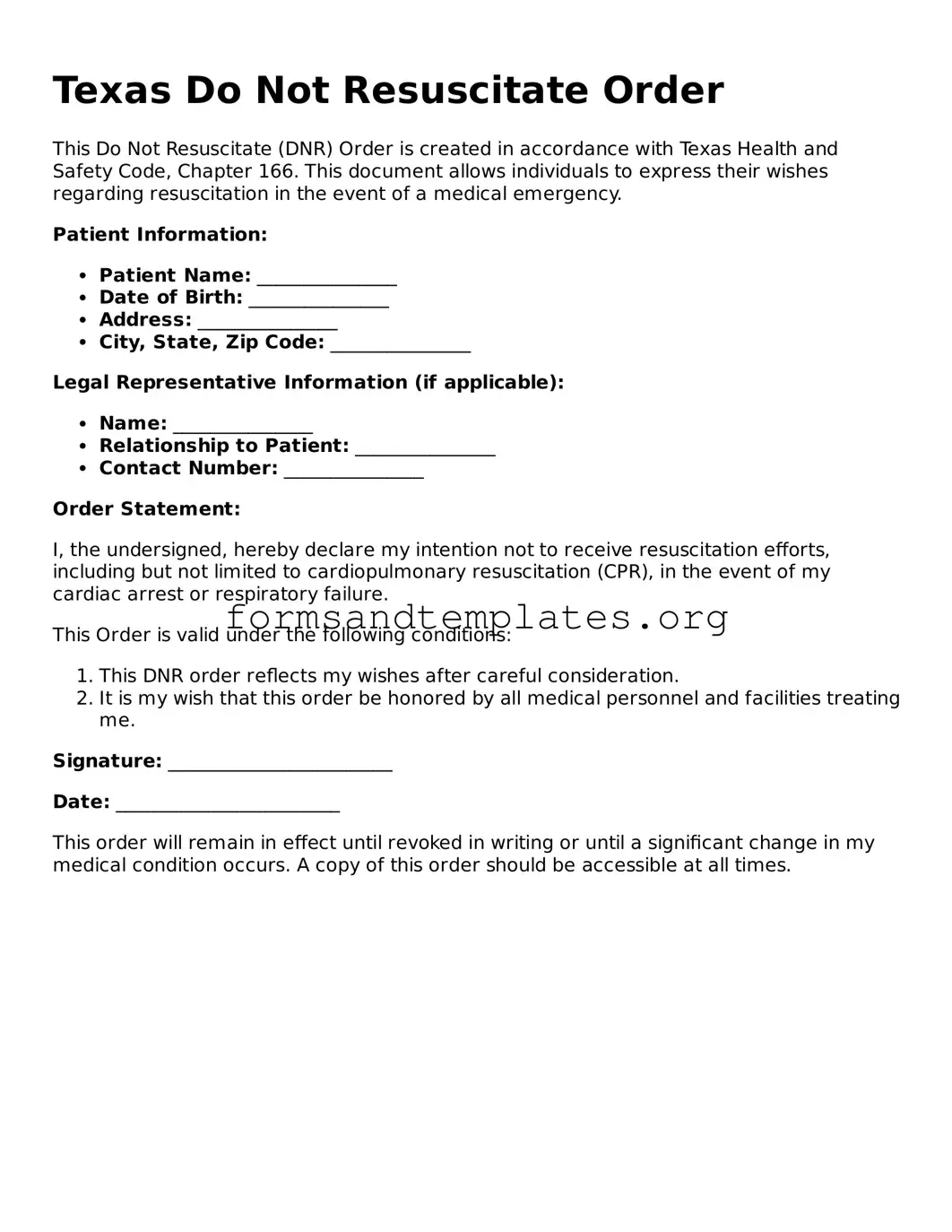What is a Texas Do Not Resuscitate Order (DNR)?
A Texas Do Not Resuscitate Order is a legal document that allows individuals to refuse resuscitation efforts in the event of cardiac or respiratory arrest. It is designed for patients who have a terminal condition or are in a state where resuscitation would not improve their quality of life.
Who can complete a DNR in Texas?
In Texas, a DNR can be completed by a patient who is at least 18 years old and has the capacity to make their own medical decisions. If the patient is unable to do so, a legally authorized representative, such as a family member or guardian, may complete the form on their behalf.
The DNR form requires the following information:
-
The patient's name and date of birth
-
The signature of the patient or their authorized representative
-
The signature of a physician who is familiar with the patient's medical condition
-
The date the order was signed
How does a DNR order work in a medical setting?
Once a DNR order is in place, it must be honored by healthcare providers in emergency situations. If a patient experiences cardiac or respiratory arrest, medical personnel will not perform CPR or other resuscitative measures, as specified in the DNR order.
Can a DNR order be revoked?
Yes, a DNR order can be revoked at any time. The patient or their authorized representative can verbally communicate the revocation to healthcare providers, or they can destroy the physical copy of the DNR form. It's essential to inform all relevant medical personnel about the change.
Where should I keep my DNR order?
It's important to keep the DNR order in a location that is easily accessible to both the patient and healthcare providers. Many individuals choose to keep a copy in their medical records, with their primary care physician, or in a visible place at home, such as on the refrigerator.
Will a DNR order affect my ability to receive other medical treatments?
A DNR order specifically addresses resuscitation efforts and does not affect other medical treatments. Patients will still receive appropriate care, pain management, and other necessary medical interventions, even if they have a DNR in place.
You can obtain a Texas DNR form from various sources, including:
-
Your healthcare provider or physician's office
-
Hospitals or medical facilities
-
Online through the Texas Department of State Health Services website
Are there any specific legal requirements for a DNR in Texas?
Yes, the DNR must be signed by a physician, and it must meet specific criteria outlined by Texas law. Additionally, the patient or their authorized representative must be informed of the implications of the DNR order. It is advisable to consult with a legal or medical professional to ensure compliance with all requirements.
